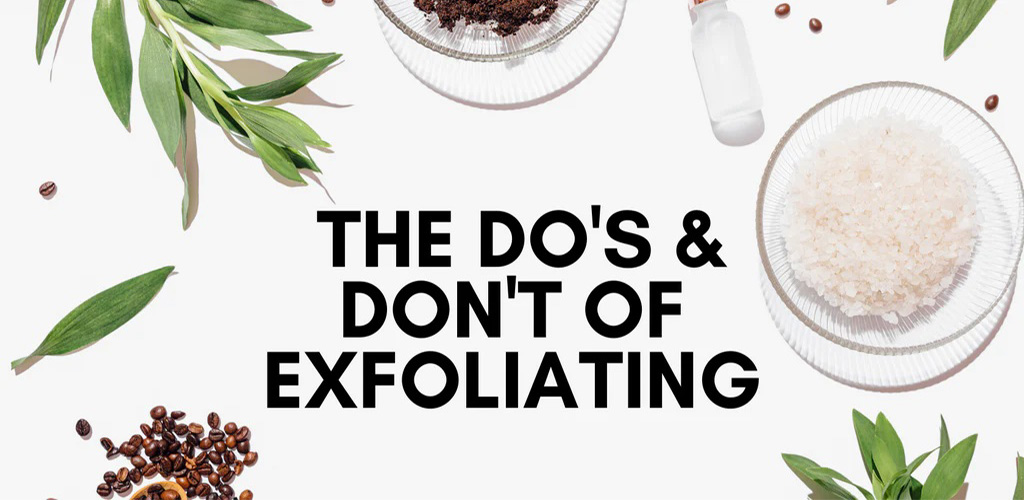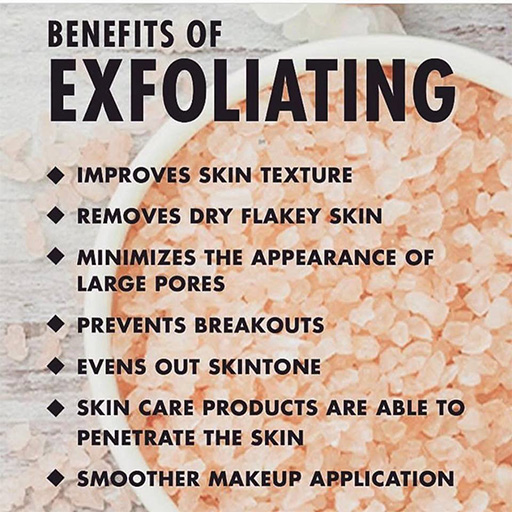Do’s and Don’ts of Exfoliation

We are aware of the significance that exfoliation plays in our skincare routine. As it removes the dead skill and dirt from the environmental pollution. We cannot deny, that our skin feels the gift of new life as we exfoliate our skin. But it is always confusing to go for DIY exfoliators or chic chemical exfoliants, which are on the tongue of every beauty blogger these days. In this article we discussed the do’s and don’ts of exfoliation:
Types of Exfoliations:
1. Chemical Exfoliations
Physical do’s and don’ts of exfoliation are composed of AHA and BHA. They extract Alpha Hydroxy acid from organic sources like sugarcane, milk, and almond. Whereas, Beta Hydroxy acids reach the deeper layer of the skin unlike AHA, which works on the skin surface only.
Your exfoliating serum needs ingredients that can lift dead skin cells and boost skin cell turnover. And to ensure that your exfoliating serum has at least one of the following acids.
2. Salicylic Acid:
BHA is one of the most recommended solutions for acne. If you use an exfoliating serum diluted with salicylic acid. it would result in smooth skin and calming inflammation and cleaning pores from clogged blackheads and whiteheads.
Malic Acid: Malic acid goes by the fruit acid. It is best used to scrape off dead cells.
Glycolic Acid: Glycolic is the AHA. It is best to cure hyperpigmentation, uneven skin complexion, and the visibility of aging lines and wrinkles.
Lactic Acid: Physical Exfoliants diluted with Lactic Acid are known best to glow your skin, and fade the visibility of aging lines and wrinkles.
Citric acid: Citric acid is extracted from citrus fruits. It is an AHA. It is an exfoliant and it soothes hyperactive skin.
3. Mechanical Exfoliation:
Mechanical Exfoliation is basically physical exfoliation. It involves scrubbing the product onto your skin to remove dead skin cells and damaged skin. There are many physical exfoliators out there. Some people scrub their faces with DIY ingredients: sugar and salt. But some take the exfoliation to a much more intensive level, which involves derma logical procedures like “dermaplaning”.
The Do’s and Don’ts of Exfoliation:
Below are the do’s and don’ts of exfoliation:
Do’s of Exfoliation:
Do#1: Delay the Aging:
If you are in the age bracket of the 30s or older than that, then you are required to start your exfoliation. When you are in your younger ages like before your 30s then you have the natural process of exfoliation going on. But, as you grow in your 30s, that process slows down. So, having additional exfoliation would delay the aging.
D0#2: Exfoliate Oily Skin:
You are someone with the oily skin, and your skin is prone to producing excess sebum then you must exfoliate.
Do#3: Get rid of the Makeup before Exfoliating:
Use oil-based cleansers or micellar water to remove all the makeup before you move on to the exfoliation step. This process could serve as deep cleansing or double cleansing which all the Korean celebrities are hooked with.
Do#4: Gentle Finger Pressure:
While exfoliating, make sure the pressure of your fingers should not be too pushed. Have gentle finger pressure to avoid irritated skin.
Do#5: Use SPF
After exfoliating, we have a fresh layer of skin, as dead skin scraped off. The fresh layer of skin is too delicate and sensitive. Hence it needs to be protected from pollution and sun rays. It is a must to use SPF and moisturizer after exfoliation.
Do#6: Know your Skin Type:
Know your skin type, and then research which do’s and don’ts of exfoliation to get which would be most suitable to your skin type.
Oily Skin:
If you are someone with oily skin then the most suitable exfoliation method would be physical exfoliation. Why? As the grains of the scrub can easily break up on your skin, removing the dirt, impurities, dead skin, and all the other build-up on your skin.
Dry Skin:
If you have dry skin, even then you must go for the physical exfoliation. Use a scrub with gentle grains and a creamy formulation. These scrubs are best providing the extra hydration that dry skin is required. It also removes the dull and dead skin from the surface and leaves you with fresh, glowing skin.
Combination Skin:
People with combination skin, can actually go for any exfoliant, as both of the exfoliants could ful-fill the basic needs of the face. If you see your skin is showing oiliness, then you can go for a mild chemical exfoliant that contains AHA, naturally extracted acid.
Mature Skin:
Mature Skin appears to be sensitive and dried out, hence mature skin needs constant care and exfoliation rapidly. Why? To increase the growth of new skin cells and to fade away the visibility of aging lines and wrinkles.
Sensitive Skin:
Skin care experts recommend avoiding too much exfoliation if you have sensitive skin. But if you believe that your skin requires exfoliation then use a mild physical exfoliant, that too with the advice of a skin-care expert.
Acne-Prone Skin:
For acne-prone skin, we would advise using chemical exfoliants rather than physical exfoliants. As physical exfoliants could be too harsh and painful on the surface with acne. Also, we recommend visiting a dermatologist for better consultation on the best exfoliating method.
Do#7: Seek Medical Help
Note that pinkish and tingling skin is a good sign after exfoliation. But, if your face turns red with burning effect or pain then it means that the exfoliation has gone wrong. In that case, immediately seek medical help.
Don’ts of Exfoliation:
Don’t#1: Exfoliate Too Much
It is sufficient to exfoliate once or twice a week, but not more than that. When you freshly exfoliate your skin, it appears to be so fresh and soft, that you want to exfoliate it every single day. As tempting as it sounds, do not over-exfoliate your skin.
Over-exfoliation could destroy your skin permanently. As, exfoliation leads to damaging the barrier of the skin which acts as a protector from damaging external factors and retains moisture. Over-exfoliation can also cause the skin to appear all dried out. Hence avoid over-exfoliation.
Don’t#2: Exfoliation is a no-no after skin treatments
Exfoliation is a no-no after skin treatments like bleach, peel, and lasers. Always remember to be gentle with your skin. If you have undergone deep and rigorous procedures like laser treatments, PRP or bleach, then exfoliate again, as these procedures are heavy exfoliants in themselves, so extra exfoliation would hurt your skin.
Don’t#3: Let the Exfoliant Sit
If you are using your chemical exfoliant, then do not rinse it off. It requires a few while for the product to act and dissolve the dead layer of skin on the body. Let the exfoliant sit on the face for 15 minutes at least, then continue with the rest nighttime regime.



